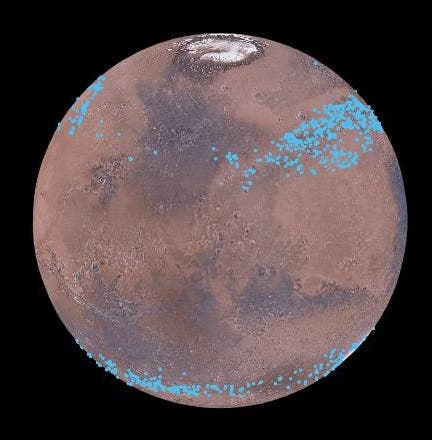Astronomers have known for quite a while that Mars has distinct polar ice caps, but the Red Planet might also have belts of glaciers at its central latitudes in both the southern and northern hemispheres. These huge glaciers are covered by a thick layer of dust which masks them and makes them seem like they are actually part of the surface of the ground.

By now, several satellites orbit Mars and relay images and data back to Earth – and some of these satellites are equipped with radars. After analyzing the data from these satellites, researchers from the University of Copenhagen concluded that the geological features are actually covered glaciers.
“We have looked at radar measurements spanning ten years back in time to see how thick the ice is and how it behaves. A glacier is after all a big chunk of ice and it flows and gets a form that tells us something about how soft it is. We then compared this with how glaciers on Earth behave and from that we have been able to make models for the ice flow,” explains Nanna Bjørnholt Karlsson, a postdoc at the Centre for Ice and Climate at the Niels Bohr Institute at the University of Copenhagen.
This is not the first study that found glaciers on Mars between the latitudes of 30 and 50 degrees, but at least from what I could find, it’s the first study that quantifies how thick and heavy the ice actually is.
“We have calculated that the ice in the glaciers is equivalent to over 150 billion cubic meters of ice – that much ice could cover the entire surface of Mars with 1.1 meters of ice. The ice at the mid-latitudes is therefore an important part of Mars’ water reservoir,” explains Nanna Bjørnholt Karlsson.
How is it that so much ice actually survived and did not evaporate to space? It seems that the dust which masked the ice for so long actually helped preserve it, encasing it under a thick layer.






